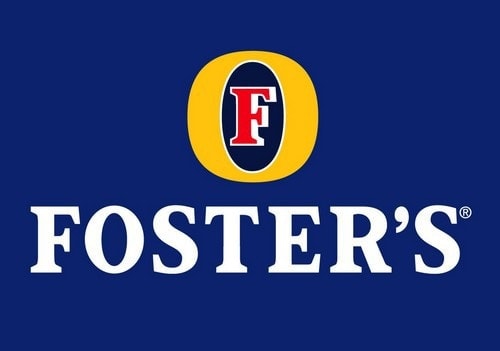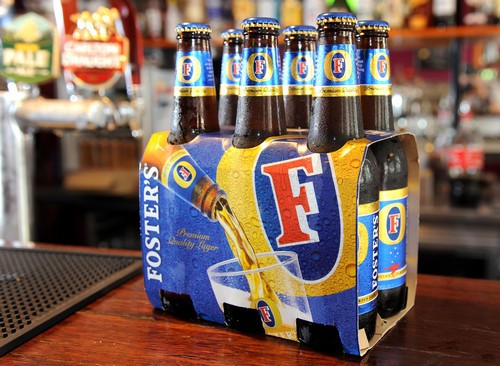The Australian Beer group was founded way back in 1887 by William & Ralph Foster who had interests in soft drinks & brewing.
Although the Foster Group was sold to British-South African multinational SABMiller in the year 2011 the earlier company was renamed to Carlton & United Breweries Limited. In the year 2016, the entire business of SABMiller was acquired by the Company Anheuser-Busch InBev. Foster Group is now a subsidiary of Anheuser-Busch InBev SA/NV.
Table of Contents
Segmentation, targeting, positioning in the Marketing strategy of Foster’s–
The beer industry uses variables such as age, gender, region and attitude, income etc. for segmenting the market in similar population characteristics so that ensure that it offers are according to the taste and preferences of the particular customer segment.
The brand uses undifferentiated targeting strategy, as the company promotes the offerings to all the segments irrespective of age, gender, and social class.
FOSTER’S has positioned itself as a brand celebrating the good and bad times and making life easy. The brand uses value-based positioning strategy.
Marketing mix – Here is the Marketing mix of Fosters.
Mission- “Not Available”
Vision- “Not Available”
Tagline-“Australian for Beer”.
Competitive advantage in the Marketing strategy of Foster’s–
1. Specialist in the Beer market:
The product portfolio and its unique ingredient of hops and exclusive Foster yeast are what helping the company in being competitively ahead of others.
2. Optimised Distribution cost:
Since the company owns a large number of alcohol brands due to which company is able to optimize its distribution cost through economies of scale.
3. Parent company:
The transnational beverage company AB InBev is the parent company of the Foster brand and owns most of the world’s popular beer brands like Budweiser, distribution rights of Bacardi, Mousel, Hasseröder, Diebels, Beck’s, Alexander Keith, Penfolds, Lindemans and Rosemount and many others.
BCG Matrix in the Marketing strategy of FOSTER–
The brand has Beers and Breweries such as Carlton & United Breweries, Cascade Brewery, and Foster’s.
The Foster brand with LAGER and PREMIUM ALE product and Carlton & breweries products are Stars in the BCG matrix while that of Cascade Breweries are the question mark in the BCG matrix.
Distribution strategy in the Marketing strategy of FOSTER–
The Company uses mix distribution channels to distribute its offerings in more than 150 countries worldwide.
It distributes it through Retail outlets, Super Markets, E-commerce websites and other channels. The Foster is 120 years old largest selling Australian beer brand globally which is known for its taste.
Brand equity in the Marketing strategy of FOSTER–
Foster’s Group imports, licenses, and distributes a large number alcohol brands.
It distributes Cinzano, Skyy vodka, Stella Artois, Perrier and 42 other import brands among many others.
The brand has been associating itself with the consumers through clubs, sponsorships, and events.
Competitive analysis in the Marketing strategy of FOSTER-
The Global beer market has players such as AB InBev, SABMiller, Kirin Holdings, Heineken Holding, and Asahi Group Holdings.
Companies in the industry compete based on the factors such as SKU’s (stock keeping units, availability, branding, price, and convenience. In beer production, USA was the 2nd largest country worldwide (221 million hectolitres), followed only by China.
Market analysis in the Marketing strategy of FOSTER-
Beer as an alcoholic beverage is a widely consumed globally and global production is rising due to increase in demand from the emerging nations.
AB InBev which is the parent company of the brand has topped the global ranking with the revenue of about 45.6 billion U.S. dollars in 2017. AB InBev’s iconic beer brand Budweiser had a global brand value of 15 billion U.S. dollars (2017). The companies operating in the industry co-create offerings by integrating with suppliers and distribution agencies to penetrate to the markets aggressively.
Customer analysis in the Marketing strategy of FOSTER–
Customers of the brand include Retail as well as B2B customers.
Retail customers consist of consumers in the age band of 21-50 years and the majority of whom are in age group of 21 – 30 years who are the midst of their academics or have just started their career.
In B2B segment its customer is Hoteliers, Bars, Restaurants, Hotel chains. These segments are catered by either the representatives of companies or the distributors.
Liked this post? Check out the complete series on Strategies


Hello, could you explain to me how their major makes segment consists of 15-30 year olds? When the legal drinking age is 21 and 18 in some countries?